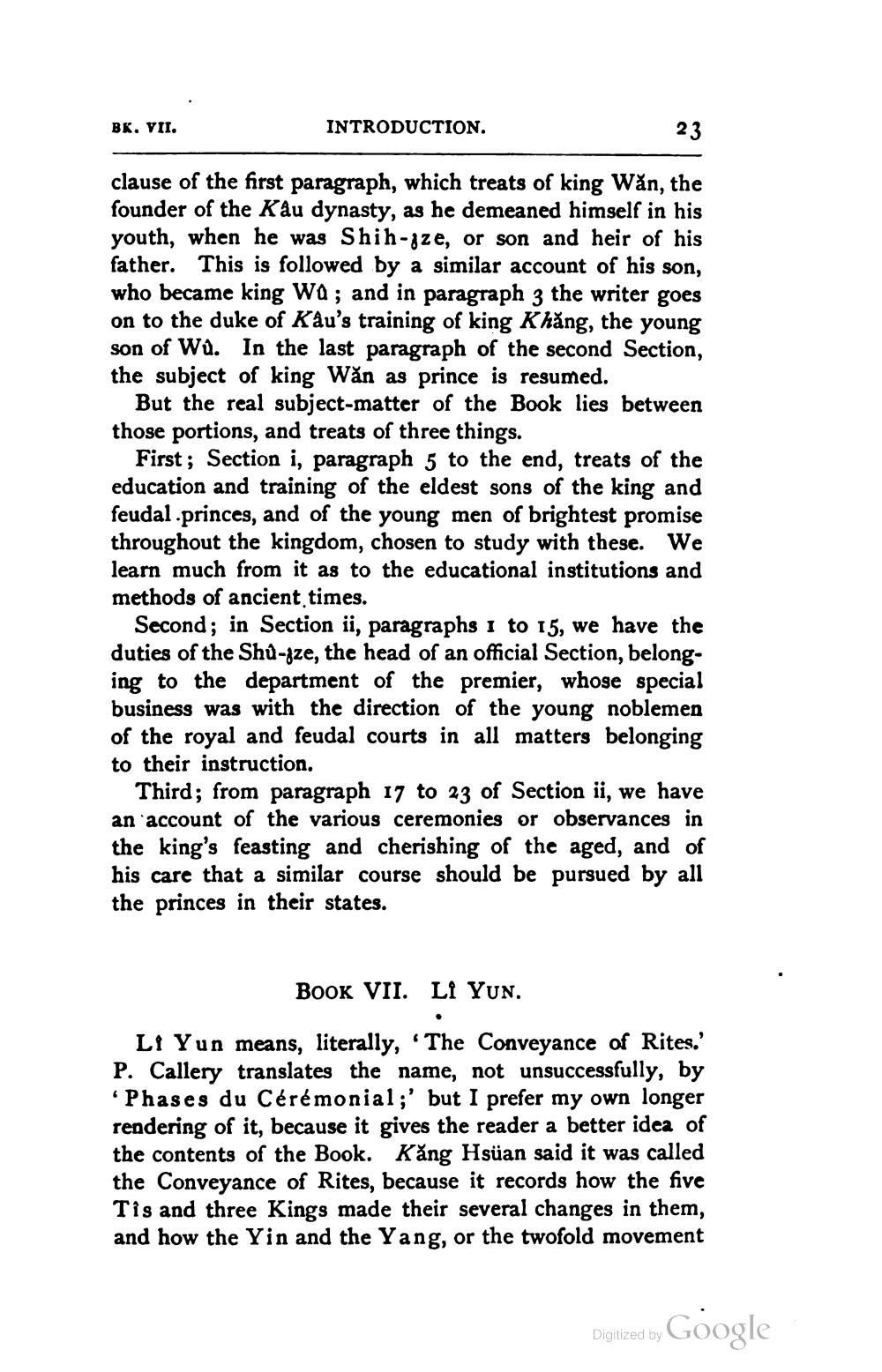________________
BK. VII.
INTRODUCTION.
clause of the first paragraph, which treats of king Wăn, the founder of the Kau dynasty, as he demeaned himself in his youth, when he was Shih-gze, or son and heir of his father. This is followed by a similar account of his son, who became king Wa; and in paragraph 3 the writer goes on to the duke of Kau's training of king Khăng, the young son of Wů. In the last paragraph of the second Section, the subject of king Wăn as prince is resumed.
But the real subject-matter of the Book lies between those portions, and treats of three things.
First; Section i, paragraph 5 to the end, treats of the education and training of the eldest sons of the king and feudal.princes, and of the young men of brightest promise throughout the kingdom, chosen to study with these. We learn much from it as to the educational institutions and methods of ancient times.
Second; in Section ii, paragraphs 1 to 15, we have the duties of the Shu-sze, the head of an official Section, belong. ing to the department of the premier, whose special business was with the direction of the young noblemen of the royal and feudal courts in all matters belonging to their instruction.
Third; from paragraph 17 to 23 of Section ii, we have an account of the various ceremonies or observances in the king's feasting and cherishing of the aged, and of his care that a similar course should be pursued by all the princes in their states.
BOOK VII. Li Yun.
Li Yun means, literally, 'The Conveyance of Rites.' P. Callery translates the name, not unsuccessfully, by
Phases du Cérémonial;' but I prefer my own longer rendering of it, because it gives the reader a better idea of the contents of the Book. Kăng Hsuan said it was called the Conveyance of Rites, because it records how the five Tis and three Kings made their several changes in them, and how the Yin and the Yang, or the twofold movement
Digitized by G
Digitized by Google




